The Yanesen district of central Tokyo, whose name features bits of the names of the three neighborhoods it comprises (Yanaka, Nezu and Sendagi), charms visitors with its temple-studded streets, craft shops and prewar architecture. Oddly, though, maps in either Japanese or English rarely guide visitors west of the Chiyoda subway line's Sendagi Station, which is where most of Sengagi is to be found. Intrigued, I set off to explore.
From Exit 1 of the station, I emerge at the bottom of Dangozaka (Dumpling Slope). Strange name, I think. Asking three passersby to explain it, I get three quite different answers. One says it's from a hilltop dango shop; another cites dumpling-shaped pebbles that once dotted the path; while the last has it mocking the people and horses that used to tumble like dumplings down the steep incline.
Dangozaka's certainly dumpling-to- dumpling with traffic, so I nip down a tiny backstreet between homes draped in the greenery of young summer. Right away I find a sculpted stone beside a copper plaque marking the spot where Seiji Noma (1878-1938) first collaborated with Dai Nippon Printing in 1909 to publish Yuben, a magazine circulating the oratory of members of the Tokyo Imperial University (forerunner of the University of Tokyo) debating club.
Noma's passion for producing magazines nearly bankrupted his family, but his enthusiasm eventually yielded the country's largest publishing company, Kodansha Ltd. Now located a few kilometers to the west in Gokokuji, Kodansha is headed by a seventh Noma president, Yoshinobu.
Further on, small Sudo Park rises like an amphitheater around a central pond and shrine to Benzaiten, the goddess of love, water, fortune, music and poetry. You'd be an idiot to slight this deity, I think, crossing the picturesque red bridge to pay respects. Choosing one of the park's ascending paths, I listen to the pleasant gurgling of a waterfall and gaze down on the former private gardens of a merchant named Yoshizaemon Sudo, who gave the land to the city in 1933.
Climbing steps parallel to the park, I head deeper into a residential area. In front of an apartment building, I see a sign for Isego Honten. From outside, it looks like a jewelry or clothing store. Nervously, I crack the door, and crash a quiet sake-tasting party, complete with sardine and squid crackers, presided over by 47-year-old Shunji Shinoda, the ninth generation in his family to run Isego.
"We've been in business since 1706," Shinoda says, pouring me a selection of chilled samples of dry sake with flavors from liquid cedar to floral vapor. "And sake can stay good in the fridge for easily up to six months, so you needn't drink a giant bottle all at once," my happy host explains. "Good think," I say, tipsy already.
"If you like dry sake, look for a higher number on the bottle," Shinoda points out as he pours the next sampling of the clear brew. "Try +10 to +14. Lower numbers are sweeter."
I take restrained sips from the next kikijogo (tasting cup) as Shinoda explains he has just moved shop from his childhood home. "It's a nice building in Yanaka that dates from 1926. You should go see it," he says. "Like most sake stores, though, it faces north, away from the light, so the alcohol isn't compromised — but growing up there, I froze in the winter. I thought I'd die!"
Shinoda's employee, Yamada, guides me to Isego's former location, shoving his scooter uphill all the way. Now used as storage, with Shinoda's parents living above, the handsome old building from the Showa Era (1926-898) still houses some of the ceramic and lacquerware sake containers in use there centuries ago.
Retracing my steps, at the tail end of a sake buzz, I "Zip-a-Dee-Doo-Dah" through Isego's upscale neighborhood, lulled by the clip-clip of gardening shears and the heady perfume of honeysuckle bushes. I'm about to conclude there's not much to write about here, when I find Kyu Yasuda-tei, meaning the Former Residence of Yasuda.
The 1918 home, lovingly maintained and protected by the Japan National Trust (JNT) and a battalion of trained volunteers, is only open on Wednesdays and Saturdays — but I'm in luck. The fact that I am wearing socks makes me doubly lucky; there's no entry without them. I pay ¥500, check my bags and ditch my shoes. "Now you have to cuff up your jeans," a docent says, doing it for me, "because they can damage the tatami."
Feeling like a hayseed in my rolled jeans and socks, I enter the Taisho Era (1912-26) home that's naturally scented by all its polished wood and 180 rush-covered tatami mats. Built by Yoshisaburo Fujita (founder of the Toshimaen amusement park in Tokyo's northern Nerima Ward), the 650-sq.-meter structure soon seemed too fragile for his five rambunctious children. Consequently, the businessman sold it to Zenshiro Yasuda, a son-in-law of Zenjiro Yasuda of the Yasuda banking zaibatsu (family-owned conglomerate).
Zenshiro and his son, Kusuo, treasured the house, and left it virtually unchanged from Fujita's time. When Kusuo died, his wife Yukiko narrowly avoided losing the property through inheritance taxes. Then, in 1996, she gifted it to the JNT — and what a treasure it is.
The Yasuda House is a superb example of Taisho Era architecture, an amalgamation of refined Japanese simplicity with European flair. Sliding doors in the grand entrance bear delicate wisteria blossoms (fuji — for Fujita) stenciled in powdered gold, and the smaller informal entrance off to the left features a storage shelf of boxed chōchin (lanterns), like flashlights prepared for guests planning to navigate the dark.
In the Western Drawing Room, carved walnut around the hearth, carpeting, and chairs covered in hand-woven fabrics all strike Western notes, but the room's proportions, and the way the sunroom mimics the shape of a moon-viewing veranda, are Japanese.
Moving on, my guide happily shows me the home's working Victrola gramophone (VV-80 for you fanatics) and cleverly disguised hibachi stoves — but wanders away when I spend too long taking photos.
An impressive hall runs the length of the house, off which are all its rooms. In some, I notice the home's original rolled-glass windows shimmering with rivulets of garden green. Each room holds its own focal point. For example, the kitchen, fitted out with a Suzuki System installed by the Yasudas in 1929, features a work island and cheerful skylight windows — both far ahead of their time.
After roaming the first and second floors, admiring how different the garden appears from each window, I head back to the entrance. There, the docents kindly direct me to a local restaurant — "It's in a very yellow building, you can't miss it," they say.
Brasserie Perle's building is the very yellow of summer squash, and at that French establishment I enjoy a reasonably priced lunch set (¥1,200), comprising a small salad, fresh bread, a main dish and a drink. With monthly menu changes, and light inventive sauces, chef team Yu and Masato Yokoyama (who are 28 and 41 respectively) host an ideal post-Yasuda rest stop.
Sated, I wander the residential maze until I hit Route 458, which delineates Sendagi's western border. Popping into Kura Kura, a shop specializing in kasuri fabric woven from pattern-dyed threads, and cool wooden clogs — half traditional geta, half Dr. Scholl's sandals — the owner says that to save on rent she has just moved shop from Yanaka. Perhaps, it occurs to me, Yanesen commerce is shifting westward.
Certainly the sun is shifting that way as I turn down a quiet side-road. Between two temples, I find a home with a noren (entrance curtain) advertising shamisen, the traditional three-stringed Japanese instrument played by plucking with a bachi (plectrum).
Sliding back the door, I rustle up 77-year-old Tetsuhiko Noguchi, whose workshop is jammed with shamisen parts: bundles of necks, tuning pegs, silk strings, drumlike bodies and the skins of cats and dogs. Noguchi both repairs and makes the instruments from scratch.
"These days, I'm so swamped with repairs," Noguchi says, stroking the planes he uses in his craft, "I don't really have time to make them anymore."
I ask him which part of creating a shamisen is the most difficult. "All of it," he answers. Then I ask him to show me which one he prizes the most. "I like them all," he says. Next, I ask if he plays the shamisen. He darts a look at me. "Of course," he says. Would he demonstrate?
"My, this is a really long interview," he sighs, but nimbly plucks out an instrument, balances it across his thigh, performs a fast tuning, then takes up a bachi. The tiny room erupts in beguiling music.
From there, we score the rest of the afternoon talking shamisen styles and parts, hidden craftsmanship details (such as gold fittings for the three-part neck and carvings inside the drum itself) — and the future of handmade shamisen, including Noguchi's hope that his son will continue the family business.
Taking reluctant leave of Noguchi, I head to the very crest of Dangozaka. There, I cannot resist darting into a marvelous bread shop, Parito Fuwato. Run for 14 years by 47-year-old Kayo Yamazaki, it specializes in healthy vegetable, nut and fruit breads that taste as wildly colorful as they appear. I snag an oatmeal rosemary cookie that all by itself should put Sendagi on everyone's map.



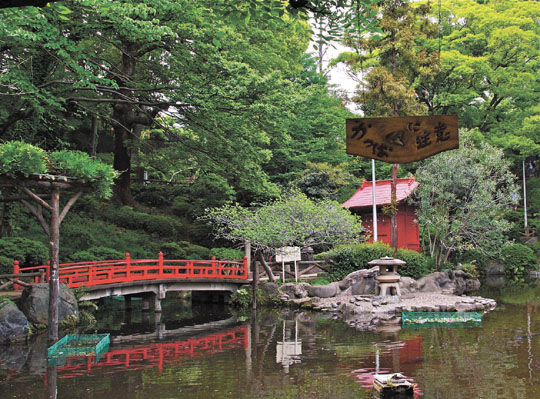
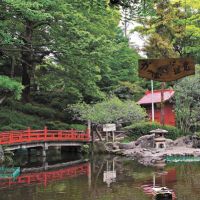
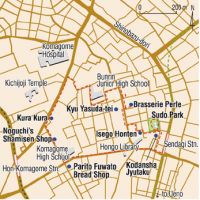
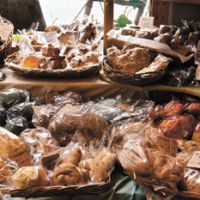
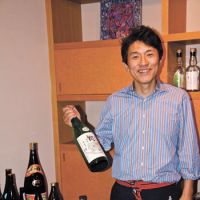















With your current subscription plan you can comment on stories. However, before writing your first comment, please create a display name in the Profile section of your subscriber account page.